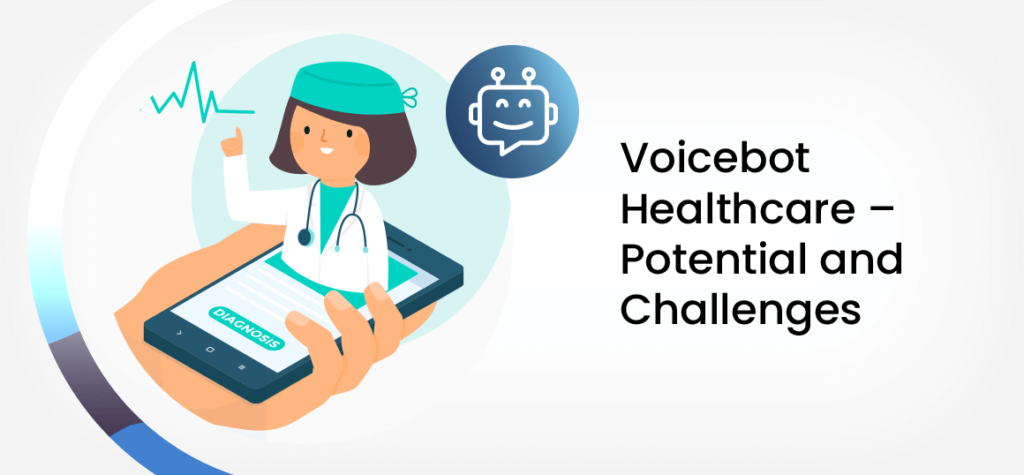Voicebot Healthcare – Potential and Challenges

Without a doubt, the phone is the most frequently chosen communication channel by patients when contacting a medical facility. This includes scheduling appointments with specialists, telemedicine consultations and obtaining information about test results. This makes the registration point staff extremely busy. Therefore, voicebots are used as support. Learn what it involves, what potential it offers and what needs to be done to successfully implement a medical Voicebot with EasyCall. We invite you to read on!
What is Voicebot Healthcare AI?
First, let’s answer the question, what exactly is a medical Voicebot? It is a dedicated tool that operates based on artificial intelligence and speech recognition modules. The virtual voice assistant can communicate with patients and guide them through processes such as patient data verification, scheduling specialist appointments and obtaining test results. This type of automation in healthcare can bring many benefits to both facility managers and the patients themselves. Therefore, it’s worth learning a bit more about what Voicebot Healthcare is.
How does the Voicebot for the medical industry work?
How does a voicebot work in medical facilities? This platform can conduct voice conversations with patients according to pre-prepared scripts. The modern tool accurately recognizes speech, the intent of the caller and holds a real-time conversation. This way, it can handle electronic patient registration, among other things. Additionally, the voice assistant in medical facilities can act as a dedicated hotline, answering frequently asked questions (FAQ) or conducting initial patient qualification – maintaining their privacy and addressing their needs. To make all this possible, the Voicebot AI tool requires several layers. These include understanding speech and context, conducting conversations in a logical sequence and recording collected data, enabling precise analytics. The Voicebot can simultaneously handle multiple conversations, minimizing the risk of overlapping appointment times or errors in medical documentation.
Potential and benefits of using a voice bot in the medical industry
The scope of using a Voicebot in a medical facility depends on several aspects. First and foremost, the real needs of the facility are considered. It is standard for this tool to be used as a patient registration program in clinics. In this regard, it can take over a significant portion of the duties of registration staff. This shortens the registration process for specialists and improves patient satisfaction with the service. A dedicated appointment scheduling program is a convenient solution.
Of course, that’s not all. The modern technology used in voice assistants for telemedicine allows patients to freely modify or cancel their appointment times. The facility can help more people by significantly reducing so-called “no-shows” – appointments where patients do not show up at the doctor’s office.
Another mutual benefit is the potential use of a medical Voicebot to provide patients with test results. The tool can conduct thorough patient verification and after verification, deliver the test results. This relieves medical staff and increases the convenience of the main interested parties. Patients do not have to wait long on the line to connect with a specialist. This area can be effectively covered by the voice assistant.
This tool is also used for periodic surveys of patient satisfaction with the services provided by the facility. This application of the Voicebot is mainly chosen by private entities. Conducting the survey allows for a thorough analysis. Based on it, key decisions are made regarding the operation of the company and implementing changes. The higher the level of the patient satisfaction, the higher the chance of business success for the medical facility.
What other potential does a dedicated Medical Voicebot offer? Since the tool takes over a significant portion of the duties of registration staff, it allows for staff reduction and increased profitability of the medical facility. However, if you decide to keep the entire team, the registration staff will be even more efficient and focus on resolving issues where the voice assistant alone is insufficient. The waiting time for patients to get a response will be shortened, which will translate into their satisfaction and contentment with the medical services provided. This is especially important for private entities competing for patients in a challenging market.
What challenges should be considered when implementing a Voicebot in a medical facility?
Of course, implementing Voicebot Healthcare involves certain challenges. First and foremost, this tool must comply with current legal regulations. These are stringent and specify which areas telemedicine can cover and how patient data must be protected. Therefore, it is crucial that a specialist is responsible for preparing the project and carrying out the final implementation. The medical Voicebot should be tailored – individual functionalities and modules are adjusted to the specifics of the medical facility. An advantage of the tool is that it allows for scaling. This is extremely important when the facility expands and offers additional medical services. Another challenge is integrating the medical Voicebot with the system already used in the clinic. Everything should be integrated, which positively affects the efficiency of this solution. Our experts will ensure this, helping you overcome all challenges during the implementation and operation of the tool.
EasyCall Implementations for the Medical Sector – Examples
As EasyCall, we specialize in implementing medical Voicebots. We have successful implementations that have positively influenced the quality of patient service in medical facilities. Our telemedicine solutions improve the efficiency and profitability of clinics. We encourage you to check out our case studies: Omega Medical Clinics and Gizińscy Medical Center. Contact our expert and learn more about the potential of implementing a Voicebot in the medical industry.
